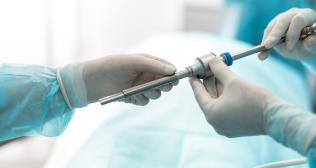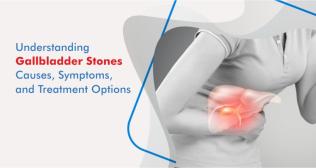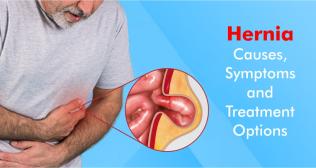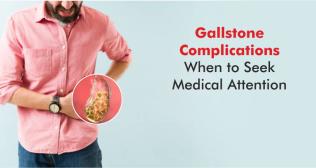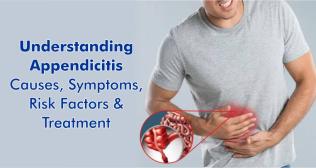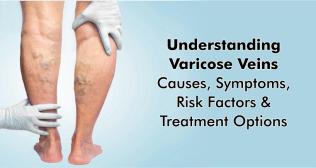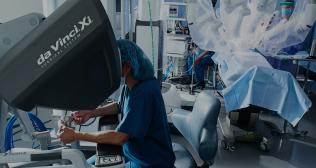
Understanding Chest Trauma: Causes, Effects, and Recovery
Introduction
Chest trauma accounts for 10–15% of all trauma cases and is the major reason for 25–30% of all deaths due to trauma, making it a critical health condition. Chest trauma is mostly managed by general surgeons, while thoracic surgeons are rarely involved. Let us delve into chest trauma’s causes, effects, symptoms, types, and medical interventions.
What are the Causes and Effects of Chest Trauma (Injuries)?
- The chest can be damaged by blunt force (for instance, motor vehicle crashes, falls, or sports injuries) or by an entity that penetrates it (for instance, a bullet or a knife).
- Chest injuries are typically severe or spontaneously dreadful as they interfere with breathing or circulation. A few injuries damage the ribs and chest muscles (known as the chest wall) severely enough to make it hard for the lungs to inflate normally.
- Damage to the lungs themselves interferes with the exchange of gases, the primary function of the lungs, wherein oxygen is taken inside, and carbon dioxide is released out.
- Chest injuries can cause circulatory issues if they result in excessive bleeding. Bleeding often occurs within the chest wall, interfering with breathing. Also, damage to the heart can impact circulation by interfering with the heart’s capability to pump blood into the body.
- Chest injuries that are major or can be critical include blunt injury to the heart, pressure on the heart caused by an accumulation of blood surrounding it, blood between the lung and the wall of the chest, bruising of the lung, rib fractures, a tear in the large artery that transports blood from the heart to the body, and air between the lung and chest wall, sometimes known as a collapsed lung.
Symptoms of Chest Injuries
- The injured portion is generally tender or painful.
- Pain is worse when individuals inhale.
- The chest may be bruised.
- Sometimes, individuals experience shortness of breath.
- If the injury is critical, they may feel tired or confused, and their skin may turn cold, sweaty, or blue.
- Such manifestations may develop when the lungs malfunction severely or people are in shock.
- Individuals in shock generally have dangerously low blood pressure and feel as if their hearts are racing.
Types of Chest Injuries and Medical Interventions
Pneumothorax
- This condition refers to the accumulation of air exterior to the lung but within the pleural cavity.
- It develops when air collects between the parietal and visceral pleura inside the chest.
- The air accumulation can put pressure on the lungs and make them collapse.
- Diagnosis is generally made by chest x-ray.
- Ultrasonography and CT are more sensitive for small pneumothoraces.
- Small pneumothoraces may disappear on their own. For larger pneumothoraces, the air must be taken out from around the lung.
- A chest tube inserted between the ribs into the space around the lungs helps drain the air and allows the lungs to re-expand.
- Some individuals need extra oxygen to help the air around the lungs be reabsorbed more rapidly. Surgery may be required to prevent a relapse.
Rib Fractures
- Typically, rib fractures result from blunt injury to the chest wall, usually comprising a strong force (e.g., due to high-velocity deceleration); however, sometimes, in the elderly, only mild or moderate force (e.g., in a minor fall) is required.
- Palpation of the chest wall may indicate some rib fractures.
- Some clinicians feel clinical evaluation is sufficient in healthy patients with minor trauma.
- However, in patients with critically blunt trauma, a chest X-ray is generally done to look for concomitant injuries.
- Treatment of rib fractures generally needs opioid analgesics, although opioids can also depress respiration.
- Some clinicians order non-steroidal anti-inflammatory drugs (NSAIDs) simultaneously.
Lung Contusion
- This condition is caused by blunt chest trauma, explosion injuries, or a shock wave linked with penetrating trauma.
- These injuries damage alveolar capillaries, so blood and other fluids gather in the lung tissue, but it does not comprise a cut or a tear of the lung tissue.
- Diagnosis involves a thorough physical examination, chest X-rays, and sometimes CT scans to assess the extent and severity of the contusion.
- Monitoring levels of oxygen and lung function is crucial. Management focuses on supportive measures to ensure sufficient oxygenation and prevent complications.
- Generally, the contusion heals on its own via supplemental oxygen, close monitoring, and supportive care. However, intensive care might still be required.
- Fluid replacement is required to ensure adequate blood volume. However, it must be performed vigilantly. Fluid overload can worsen pulmonary edema.
Hemothorax
- It is a frequent consequence of traumatic thoracic injuries. It is an accumulation of blood in the pleural space, a potent void between the visceral and parietal pleura.
- The major mechanism underlying trauma is a blunt injury to extrathoracic or intrathoracic or structures, resulting in thoracic bleeding.
- Bleeding may begin from the chest wall, internal arteries, great vessels, myocardium, diaphragm, or abdomen.
- CT scan is preferred for the assessment of intrathoracic injuries. However, this technique might not be feasible in unstable trauma patients.
- Furthermore, smaller centers may not have CT scans readily available.
- Conventionally, chest radiography has been employed as a screening tool to examine for life-threatening injuries.
- The treatment goal is to stabilize the individual, impede the bleeding, and remove the blood and air in the pleural space.
- A chest tube is placed through the wall of the chest between the ribs to clear out the blood and air.
Chest trauma represents a complex and multifaceted clinical condition with crucial implications for patient outcomes. By understanding its causes, types, and various medical interventions available, healthcare professionals can effectively manage these challenging cases and improve patient care.
Popular Searches :
Hospitals: Cancer Hospital in Delhi | Best Heart Hospital in Delhi | Hospital in Amritsar | Hospital in Ludhiana | Hospitals in Mohali | Hospital in Faridabad | Hospitals in Gurgaon | Best Hospital in Jaipur | Hospitals in Greater Noida | Hospitals in Noida | Best Kidney Hospital in Kolkata | Best Hospital in Kolkata | Hospitals in Rajajinagar Bangalore | Hospitals in Richmond Road Bangalore | Hospitals in Nagarbhavi Bangalore | Hospital in Kalyan West | Hospitals in Mulund | Best Hospital in India | Gastroenterologist in Jaipur | Cardiology Hospital in India
Doctors: Dr. Rana Patir | Dr. Rajesh Benny | Dr. Rahul Bhargava | Dr. Jayant Arora | Dr. Anoop Misra | Dr. Manu Tiwari | Dr. Praveer Agarwal | Dr. Arup Ratan Dutta | Dr. Meenakshi Ahuja | Dr. Anoop Jhurani | Dr. Shivaji Basu | Dr. Subhash Jangid | Dr. Atul Mathur | Dr. Gurinder Bedi | Dr. Monika Wadhawan | Dr. Debasis Datta | Dr. Shrinivas Narayan | Dr. Praveen Gupta | Dr. Nitin Jha | Dr. Raghu Nagaraj | Dr. Ashok Seth | Dr. Sandeep Vaishya | Dr. Atul Mishra | Dr. Z S Meharwal | Dr. Ajay Bhalla | Dr. Atul Kumar Mittal | Dr. Arvind Kumar Khurana | Dr. Narayan Hulse | Dr. Samir Parikh | Dr. Amit Javed | Dr. Narayan Banerjee | Dr. Bimlesh Dhar Pandey | Dr. Arghya Chattopadhyay | Dr. G.R. Vijay Kumar | Dr Ashok Gupta | Dr. Gourdas Choudhuri | Dr. Sushrut Singh | Dr. N.C. Krishnamani | Dr. Atampreet Singh | Dr. Vivek Jawali | Dr. Sanjeev Gulati | Dr. Amite Pankaj Aggarwal | Dr. Ajay Kaul | Dr. Sunita Varma | Dr. Manoj Kumar Goel | Dr. R Muralidharan | Dr. Sushmita Roychowdhury | Dr. T.S. MAHANT | Dr. UDIPTA RAY | Dr. Aparna Jaswal | Dr. Ravul Jindal | Dr. Savyasachi Saxena | Dr. Ajay Kumar Kriplani | Dr. Nitesh Rohatgi | Dr. Anupam Jindal |
Specialities: Heart Lung Transplant | Orthopedic | Cardiology Interventional | Obstetrics & Gynaecology | Onco Radiation | Neurosurgery |







